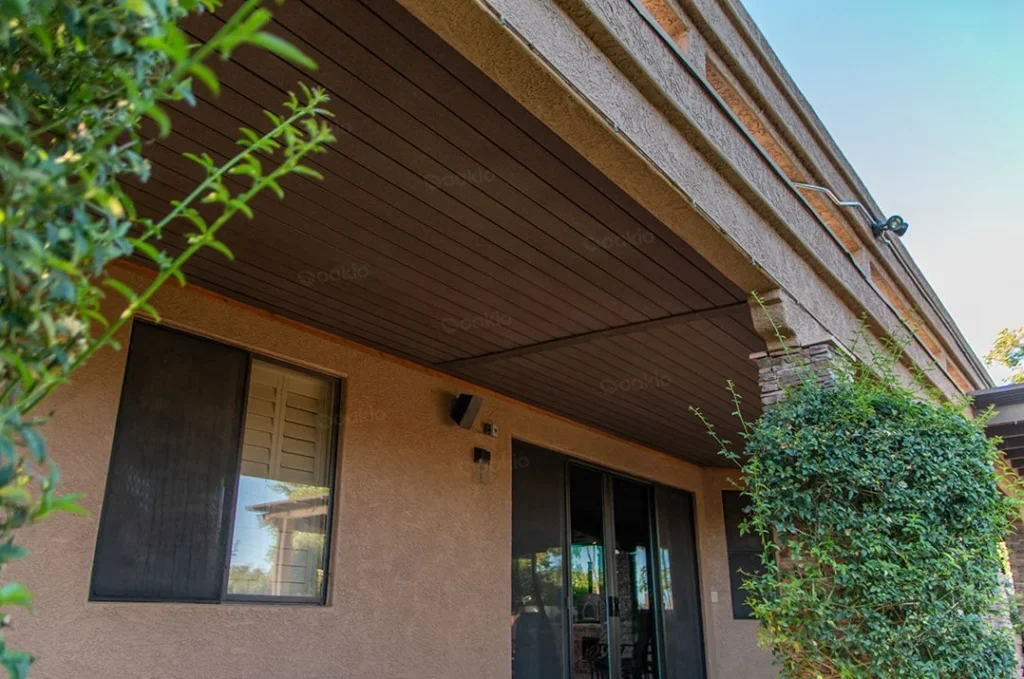Introduction
When I first installed WPC cladding, I was excited about its modern look and low-maintenance promise. But like many homeowners, I quickly realized that “low maintenance” doesn’t mean “no maintenance.” Dirt, stains, and changing seasons can affect how your cladding looks over time. If neglected, even the most durable materials can lose their charm.
That’s why I’ve put together this practical guide—to help you keep your WPC cladding looking as fresh as the day it was installed. With a few simple habits and the right care, you can protect your investment and enjoy the long-lasting beauty of your exterior.
Understanding WPC Cladding
Before we dive into maintenance, it helps to understand what makes WPC cladding unique. This background will give you a clearer idea of why proper care is important and how it helps extend the life of your cladding.
What is WPC Cladding?
WPC stands for Wood Plastic Composite, a material made from a mix of recycled wood fibers and durable polymers. This combination gives it the warm, natural appearance of wood while adding the strength and resilience of plastic. Because of this unique blend, WPC cladding is not only attractive but also resistant to moisture, fading, and insect damage, making it a popular choice for modern homes and commercial buildings, notes the Real Property Management Ignite team.
Key Benefits
- Resistant to moisture, fading, and insects – WPC cladding holds up well in harsh weather, resists mold growth, and doesn’t attract termites the way natural wood does.
- Longer lifespan compared to traditional timber – Its durable composition helps it maintain its strength and appearance for many years, reducing the need for frequent replacements.
- Minimal painting, sealing, or staining required – Unlike natural wood, WPC cladding keeps its color and finish with very little effort, saving both time and maintenance costs.
Where it is Used
WPC cladding is highly versatile and can be seen in a wide range of applications. It’s commonly used for home exteriors, giving houses a modern, weather-resistant finish. Many businesses also choose it for commercial facades because it combines durability with a sleek, professional look.
Beyond outdoor use, it’s increasingly popular for fencing and even interior accent walls, where it brings warmth and texture to indoor spaces. This balance of durability and style is why more property owners and designers are turning to WPC cladding instead of traditional materials.
Regular Cleaning
I’ve found that a consistent cleaning routine is the single most effective way to keep cladding looking new. Here’s what works:
Frequency
- Light cleaning: Aim to give your WPC cladding a quick wash every 2–3 months. This helps remove dust, pollen, and surface dirt before they build up.
- Deep cleaning: Schedule a more thorough cleaning at least twice a year, ideally in spring and autumn. These seasonal cleanings ensure your cladding stays fresh after harsh weather changes and prepares it for the months ahead.
Tools
- Soft-bristle brush or microfiber cloth – Gentle enough to clean without scratching the cladding surface.
- Low-pressure hose – Effective for rinsing away dirt and soap while avoiding damage from high water pressure.
- Mild detergent solution – Safe for WPC materials and strong enough to lift stains without leaving harmful residues.
Steps
- Rinse the surface with clean water to remove dust, pollen, and loose dirt before scrubbing.
- Apply a mild soapy solution using a soft-bristle brush or cloth, making sure the cleaner reaches all grooves and edges.
- Gently scrub in the direction of the cladding’s grain to lift dirt without scratching the surface.
- Rinse thoroughly with fresh water to wash away any soap residue and leave the panels looking fresh.
Tip: Avoid using steel brushes, abrasive pads, or high-pressure washers, as they can scratch or strip away the protective coating on WPC cladding.
Stain Removal
Even with careful upkeep, stains happen. I’ve had to deal with everything from barbecue grease to rainwater streaks. Luckily, most stains are manageable with quick action.
- Food and beverages: Use warm, soapy water. Wipe immediately to prevent permanent marks.
- Oil and grease: Apply a diluted degreaser. Rinse thoroughly.
- Mold and mildew: Mix one part white vinegar with three parts water. Scrub gently.
- Scratches: Light sanding with fine-grit sandpaper can reduce visibility.
If stains persist, specialized WPC cleaners (eco-friendly versions are best) can restore the surface without harsh chemicals.
Seasonal Care
Changing weather conditions can affect how WPC cladding performs and looks. I’ve learned to adapt my care routine throughout the year.
- Rainy season: Clear gutters and drainage areas. Standing water can cause streaking.
- Summer/UV protection: While WPC is fade-resistant, prolonged exposure may dull its color. Cleaning and applying a UV-protective coating (if recommended by the manufacturer) helps.
- Winter: Check for ice buildup around edges. Avoid using rock salt or harsh de-icing chemicals near the cladding.
Preventive Maintenance
Prevention is easier than repair. I always follow a few golden rules:
- Avoid harsh chemicals: Bleach and solvents can discolor WPC surfaces.
- Prevent impact damage: Be cautious when moving garden tools or furniture near the wall.
- Ensure ventilation: Adequate airflow behind panels reduces moisture build-up.
- Check drainage: Ensure water flows away from the base of your cladding.
A simple inspection once every few months can help spot minor issues before they escalate.
Long-Term Care
I like to think of WPC cladding as a long-term partner—it rewards consistent attention.
- Inspect joints and fasteners: Look for loose panels or screws. Tighten as needed.
- Replace damaged panels: If one section is compromised, replacing it early prevents structural issues.
- Refresh appearance: In some cases, applying a light WPC reviver oil (manufacturer-approved) can bring back vibrancy.
Eco-Friendly Practices
Sustainability matters to me, and I appreciate that WPC cladding itself is eco-conscious. Extending that mindset to maintenance makes sense.
- Use biodegradable cleaners instead of harsh chemicals.
- Minimize water use with low-flow hoses.
- Compost biodegradable waste (like leaves) instead of letting it pile against the cladding.
By adopting green habits, you protect both your home and the environment.
Why Quality WPC Cladding Matters
Not all cladding materials perform the same over time, which is why choosing high-quality WPC cladding makes a real difference. The best options stand out for three main reasons:
- Low maintenance design – Engineered to resist stains, fading, and weathering.
- Durability – Built to last with minimal upkeep, making them a cost-effective choice in the long run.
- Eco-friendly materials – Often made with recycled wood and plastic, helping reduce environmental impact.
For homeowners and designers alike, that means less time on upkeep and more time enjoying a beautiful, worry-free exterior. Oakio cladding delivers on these qualities, making it a trusted option for long-term performance and sustainability.
Conclusion
Keeping WPC cladding looking new doesn’t require complicated routines—it just takes consistency. From regular cleaning and quick stain removal to seasonal adjustments and eco-friendly practices, small steps go a long way in preserving its beauty.
I’ve learned that when you invest in quality cladding and give it the care it deserves, you enjoy both style and durability for years. If you’re considering a long-term solution that’s as practical as it is beautiful, I’d recommend looking into different WPC cladding as a smart choice. Your exterior deserves to stay as striking as the day it was installed. With the right habits, it will.
Featured for a reason—see what’s catching everyone’s attention.






